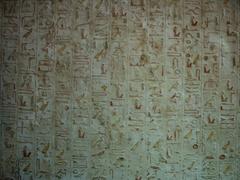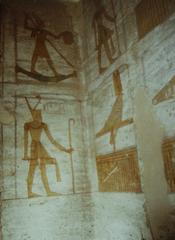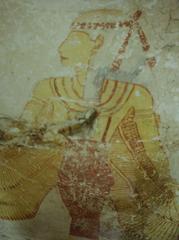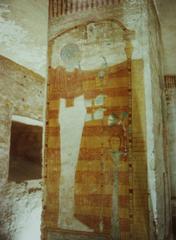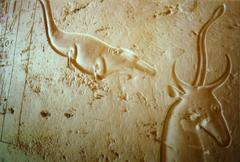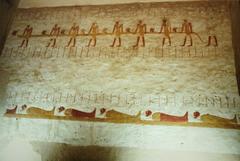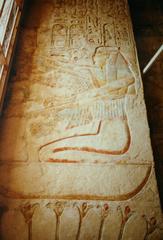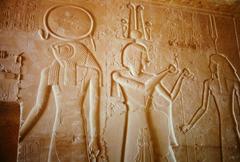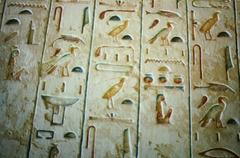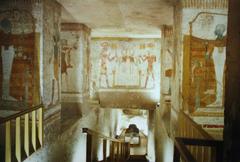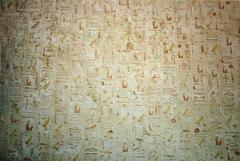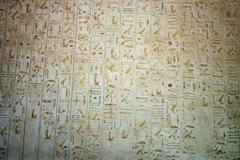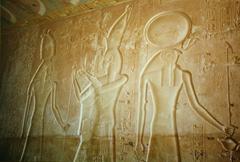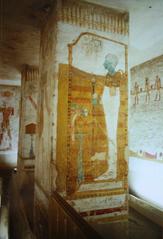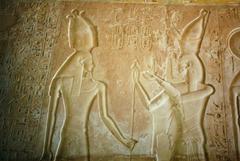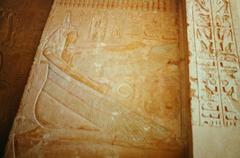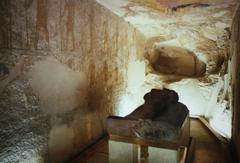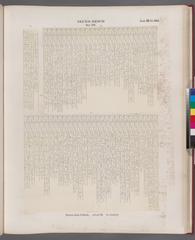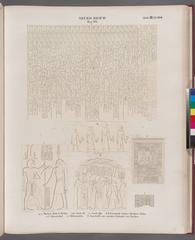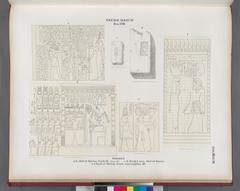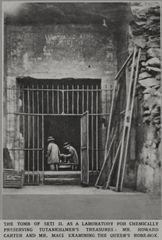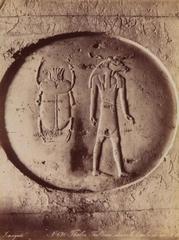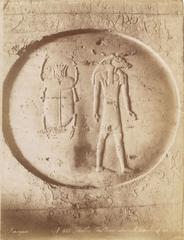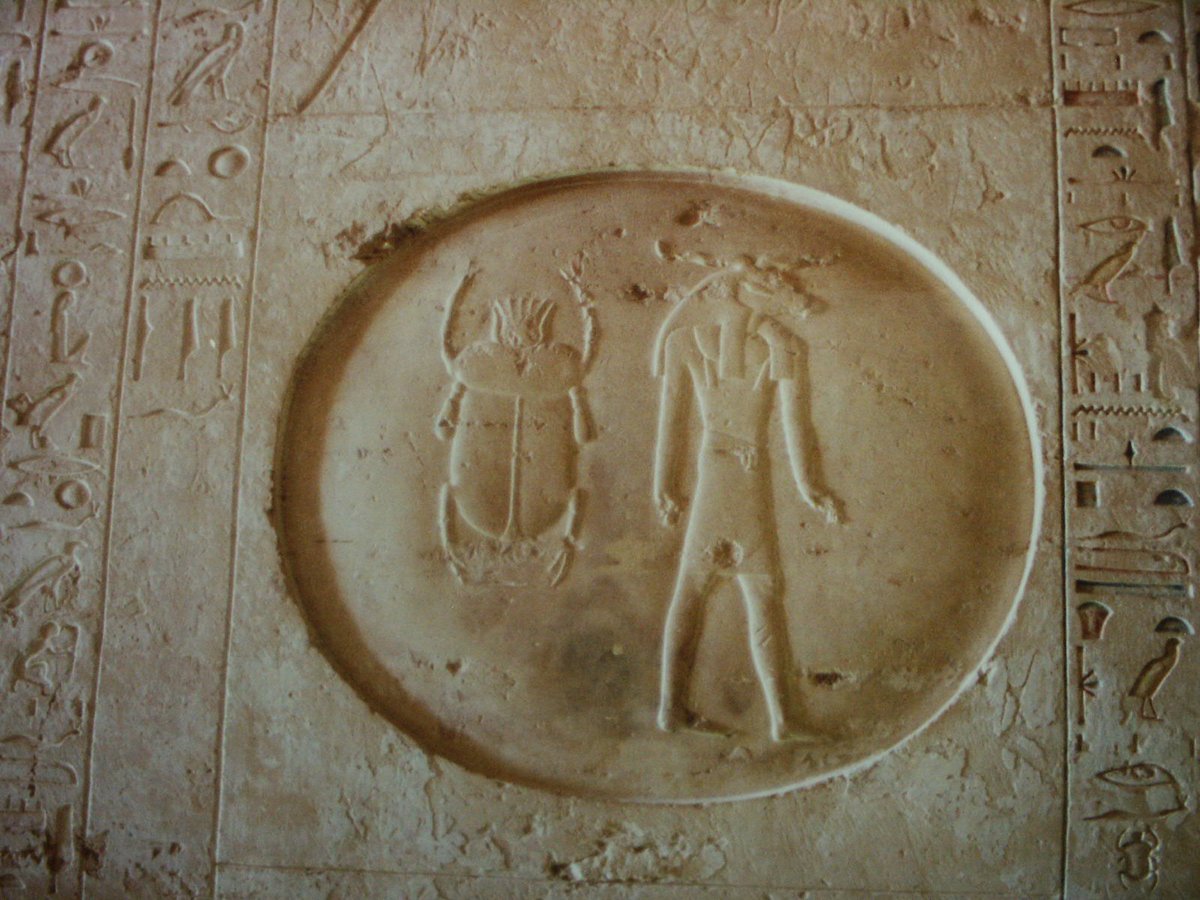
KV15 Tomb of Seti II: Visiting Hours, Tickets, and Historical Significance in Luxor, Egypt
Date: 14/06/2025
Introduction
Located in Egypt’s legendary Valley of the Kings on Luxor’s west bank, KV15 is the final resting place of Pharaoh Seti II. This tomb, while modest in scale compared to those of Seti I or Ramses II, displays a remarkable blend of late Nineteenth Dynasty artistry and historical intrigue. Seti II’s reign (circa 1203–1197 BCE) was characterized by political upheaval, and his tomb reflects both the era’s challenges and the enduring Egyptian traditions surrounding royal burial and the afterlife. For modern visitors, KV15 offers an engaging journey through ancient art, architecture, and ritual (Historical Eve; Theban Mapping Project; Egyptopia).
This guide combines comprehensive historical background with essential visitor information—covering hours, ticketing, accessibility, travel tips, and nearby attractions—so you can make the most of your exploration of KV15.
Table of Contents
- Introduction
- Historical Background of KV15 and Seti II
- Construction and Features
- Burial, Rediscovery, and Artistic Legacy
- Religious and Artistic Program
- KV15 in the Valley of the Kings
- Visiting Information: Hours, Tickets, Accessibility
- Travel Tips and Nearby Attractions
- Frequently Asked Questions (FAQ)
- Visual and Interactive Resources
- Summary Table: Key Features
- Conclusion & Call to Action
- References
Historical Background of KV15 and Seti II
Seti II (Sethos II) was a pharaoh of the 19th Dynasty, ascending the throne during a period of internal instability following the reigns of Seti I and Ramses II. As the son of Merneptah and Isetnofret, he inherited a kingdom facing challenges from rival claimants such as Amenmesse, believed to be his half-brother. Seti II’s reign saw him temporarily lose and then regain control of Upper Egypt, relying on support from influential figures like Chancellor Bay and his wife, Queen Twosret (Historical Eve). His time as pharaoh was brief and turbulent, but his tomb remains a significant artifact of New Kingdom Egypt.
Construction and Features of KV15
Architectural Layout
KV15 is carved into the southwestern cliffs of the Valley of the Kings, extending approximately 75 meters with a steady descent and a straight axis. Unlike some earlier royal tombs, KV15 lacks side chambers and the high trapezoidal niches typical of its era (ETL Travel; Egyptopia; Ancient Egypt Online). The entrance is cut directly into a nearly vertical cliff, leading through a series of long corridors, a well room (never excavated), a four-pillared hall, and an adapted burial chamber.
Construction and Decoration
The tomb was never fully completed. Construction was interrupted, and some sections remain roughly finished or only sketched. Early corridors feature both sunk and raised reliefs with painted details, while deeper sections show hastily applied painted decoration. The burial chamber is an adapted corridor, minimally altered and decorated with funerary scenes (ETL Travel; Ancient Egypt Online).
Burial, Rediscovery, and Artistic Legacy
Seti II was originally interred in KV15, but like many royal mummies, his remains were moved to a cache (KV35, the tomb of Amenhotep II) during later periods to protect against tomb robbers (Historical Eve). Rediscovered in the 19th century, KV15’s structure and decoration have provided scholars with invaluable evidence of late New Kingdom royal burial practices. The tomb’s unfinished state and its modest size reflect not only the brevity of Seti II’s reign but also the era’s political and economic difficulties.
Religious and Artistic Program
Despite its modesty, KV15 features a rich array of funerary texts and scenes:
- Corridor Lintels and Jambs: Iconography includes Isis and Nephthys flanking a sun disk, Ma’at, and the names of Seti II.
- Corridors: Scenes from the Litany of Ra, depictions of Seti II offering to various gods, and celestial motifs such as vultures and the Ba-bird of Ra.
- Well Room: Painted representations of funerary objects and the king in divine forms, including unique scenes like Seti II riding a panther.
- Four-Pillared Hall: Book of Gates (fifth and sixth hours), Seti II making offerings to Osiris and Ptah.
- Burial Chamber: The goddess Nut decorates the ceiling, surrounded by rows of deities and scenes from the Book of Gates. The red granite sarcophagus is the smallest of the New Kingdom, with the image of Osirian Seti II on the lid and Nut on the reverse. The lid’s head of Nut is now in the Louvre (Egyptopia).
The overall decorative program, though incomplete, aligns with the traditions of Seti II’s predecessors, emphasizing the king’s divine journey and protection in the afterlife.
KV15 in the Valley of the Kings
While KV15 is less grandiose than KV17 (Seti I) or KV7 (Ramses II), it holds an important place in the Valley’s history. Its architecture and decoration mirror the shifting fortunes of the 19th Dynasty, and its relative accessibility makes it a rewarding destination for visitors interested in Egypt’s royal necropolis (Theban Mapping Project).
Visiting Information: Hours, Tickets, Accessibility
Visiting Hours
- General Hours: The Valley of the Kings opens daily, typically from 6:00–5:00 PM (winter) or until 6:00 PM (summer). KV15 is open within these hours, though access can change due to conservation (Egyptian Ministry of Tourism and Antiquities; Your Intrepid Family).
- Tip: Confirm current opening times before your visit.
Tickets
- Pricing: General Valley of the Kings admission is LE260 (about $9 USD as of 2023) for three tombs, including KV15. Special tombs (e.g., Tutankhamun, Seti I) require additional tickets.
- Where to Buy: Purchase at the visitor center or online via the egymonuments website.
- Photography Permit: Non-flash photography is permitted with a purchased permit (about LE300/$10 USD). Flash and tripods are not allowed.
Accessibility
- Mobility: Access involves sloping and uneven corridors with steps; not fully wheelchair accessible.
- Facilities: The visitor center provides restrooms, a café, and a gift shop, but no amenities are inside the tombs.
- Travel Tip: Wear comfortable shoes, bring water, and use sun protection.
Travel Tips and Nearby Attractions
- Arrive Early: Beat both crowds and heat by visiting first thing in the morning.
- Combine Tomb Visits: Plan your three tombs included in the standard ticket (KV15, KV2, KV6, etc.).
- Nearby Sites: Explore other Valley tombs (KV2, KV6, KV8) and famous West Bank sites like the Temple of Hatshepsut and the Colossi of Memnon.
- Guided Tours: Enhance your experience with a licensed guide (available at the visitor center or through tour operators).
Frequently Asked Questions (FAQ)
Q: What are the visiting hours for KV15?
A: Typically 6:00 AM to 5:00 PM daily, but check for seasonal or conservation updates.
Q: How much is the ticket for KV15?
A: Included in the standard Valley ticket (LE260, includes three tombs); special tombs require separate tickets.
Q: Can I buy tickets online?
A: Yes, via the egymonuments website.
Q: Is KV15 accessible for people with disabilities?
A: Accessibility is limited due to the tomb’s architecture; consult the visitor center for advice.
Q: Is photography allowed?
A: Non-flash photography is allowed with a permit; flash and tripods are forbidden.
Visual and Interactive Resources
- High-Quality Images: View detailed images and plans of KV15 on the Theban Mapping Project.
- Virtual Tours: Preview the tomb’s layout and decoration with online resources or this 3D virtual tour (if available).
- Alt Text for Accessibility: Ensure all images include descriptive alt text, such as “Entrance of Tomb of Seti II KV15” or “Burial Chamber Ceiling with Goddess Nut in KV15.”
Summary Table: Key Architectural and Decorative Elements
| Section | Key Features | Decorative Themes/Texts |
|---|---|---|
| Entrance & Corridor A | Smoothed plaster; Isis & Nephthys, Ma’at, Seti II’s names | Symbolic lintel/jambs |
| Corridor B | Ma’at figures, Seti II with Ra-Horakhty & Nefertum, vulture ceiling | Litany of Re, divine offerings |
| Corridor C | Seti II with Ma’at & Re-Horakhty, 74 forms of Ra, Ba-bird ceiling | Litany of Re, Amduat, celestial motifs |
| Corridor D | Scenes from Amduat, Isis & Nephthys as kites, unfinished star ceiling | Amduat, celestial motifs |
| Well Room (E) | Divine statues, blue cartouches, unique shrine scenes | Divine imagery, funerary symbolism |
| Pillared Hall (F) | Four pillars, Book of Gates, Seti II with Osiris & Ptah | Book of Gates, divine offerings |
| Burial Chamber (J) | Nut on ceiling, Anubis, deities, mummified figures, granite sarcophagus | Book of Gates, Nut, Osirian symbolism |
(Sources: Egyptopia, ETL Travel, Ancient Egypt Online)
Conclusion & Call to Action
KV15, the Tomb of Seti II, is a testament to the resilience and creativity of New Kingdom Egypt during a time of political uncertainty. Its unique mix of artistic traditions, historical significance, and accessible location make it a highlight of any Luxor itinerary. Plan your visit in advance, respect preservation rules, and enrich your experience by taking advantage of guided tours and virtual resources.
Ready to explore KV15 and Luxor’s historical treasures?
Download the Audiala app for expertly curated guides, interactive maps, and up-to-date visitor information. Follow us on social media for more travel inspiration and the latest updates.

